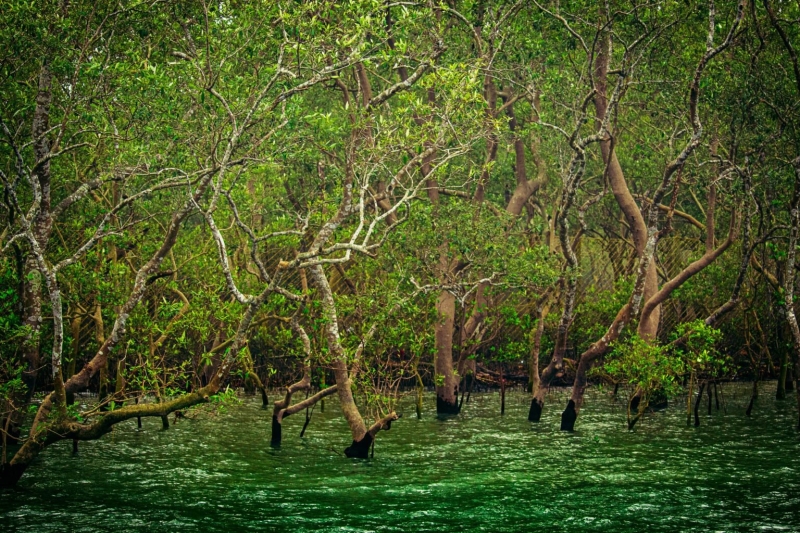- CA Yunus pays homage to Liberation War martyrs on Victory Day |
- Bangladesh capital market extends losing streak for second day |
- Bangladesh celebrates Victory Day Tuesday |
- 'Different govts presented history based on their own ideologies': JU VC |
Eco-Tourism Supports Conservation and Local Communities

Eco-tourism plays a crucial role not only in supporting conservation efforts but also in fostering environmental awareness, creating employment opportunities, facilitating cultural exchange, and enhancing food security for local communities.
A vital aspect of eco-tourism in the Sundarbans is its promotion of traditional knowledge and practices related to the region's unique ecosystem. This contributes to preserving the cultural heritage of local communities and instills a sense of pride in their distinctive way of life.
Professor Anwarul Kadir, Executive Director of the Sundarbans Academy, emphasized that eco-tourism has become an essential tool for environmental conservation and for improving the livelihoods of local communities. "The Sundarbans is the largest mangrove forest in the world, covering 6,017 square kilometers, and is home to an array of flora and fauna, including endangered species like the Royal Bengal Tiger and estuarine crocodiles," he said.
Recognizing the region's importance, Prof. Kadir highlighted that sustainable eco-tourism management plans are in place to ensure that tourism activities are environmentally responsible and that they provide tangible benefits for local people. The Sundarbans, located across the districts of Satkhira, Khulna, and Bagerhat, serves as a vital resource for the coastal communities, offering livelihood opportunities in forestry, fishing, shrimp farming, and agriculture.
Prof. Abdullah Harun Chowdhury, of the Environmental Science Discipline at Khulna University, added that the Sundarbans is home to a wide variety of critically endangered species, with around 35 million people living in the surrounding coastal areas. For these communities, safeguarding the mangrove forests and the ecologically sensitive embankment areas is essential for their survival.
However, the Sundarbans faces numerous threats, including poaching, illegal logging, and unsustainable resource extraction, all of which undermine its ecological integrity. Furthermore, climate change and rising sea levels are exacerbating the problem, with high tides encroaching further inland each year, leading to the dieback of Sundari trees that are intolerant to increased salinity.
Despite these challenges, eco-tourism generates much-needed revenue for park maintenance, wildlife protection, and conservation initiatives. Prof. Harun Chowdhury pointed out that these funds play a key role in preserving the delicate balance of the Sundarbans ecosystem.
To manage the growing number of tourists, the Forest Department has opened three new eco-tourism centers, with plans for more to be established in areas such as Alibanda, Andamanik, Shekhertek, and Kalabagi. This comes on top of the existing seven centers in locations like Karamjal, Herbaria, Kalagachia, Katka, Kochikhali, Dubla Char, and Heron Point.
Katka, located in the northwest of the Sundarbans, is a peaceful island that offers visitors the chance to enjoy bird watching, wildlife sightings, including the elusive Royal Bengal Tiger, and boat tours through the region's small creeks and canals. Similarly, Kochikhali, known as "Tiger Point," is an important breeding ground for the Royal Bengal Tiger.
Nilkamal, situated along the Bay of Bengal, is another attractive spot where visitors can take in panoramic views from a watchtower. The area is known for its stunning blend of sea and green mangroves, and visitors often spot wildlife, including spotted deer and occasionally, the Royal Bengal Tiger.
Dublar Char, an island famous for its fish drying activities during the winter months, offers a unique cultural experience for tourists. The dried fish, or 'sutki,' produced here is exported as a delicacy both domestically and internationally.
In addition to providing visitors with diverse experiences, the eco-tourism centers are equipped with amenities like watchtowers, hanging bridges, walking trails, rest houses, and pontoons for convenient water access. These facilities help ensure that the tourism experience is both comfortable and environmentally responsible.
On average, more than 100,000 tourists—both local and international—visit the Sundarbans annually, generating revenue exceeding Taka 1 crore. The region’s eco-tourism not only supports its biodiversity but also provides a livelihood for more than 3 million people, as the mangrove forest acts as a natural shield protecting coastal communities from cyclones and floods.
In a bid to further enhance the tourism experience, a feasibility study is underway to develop world-class facilities near the Sundarbans, ensuring the preservation of the ecosystem while making it an even more attractive destination.
Through eco-tourism, the Sundarbans has shown significant potential for balancing environmental preservation with economic development, benefiting both the local communities and the natural landscape. By adhering to sustainable travel practices and celebrating the region’s unique ecological and cultural heritage, eco-tourism continues to play a pivotal role in safeguarding the future of this critical ecosystem.

